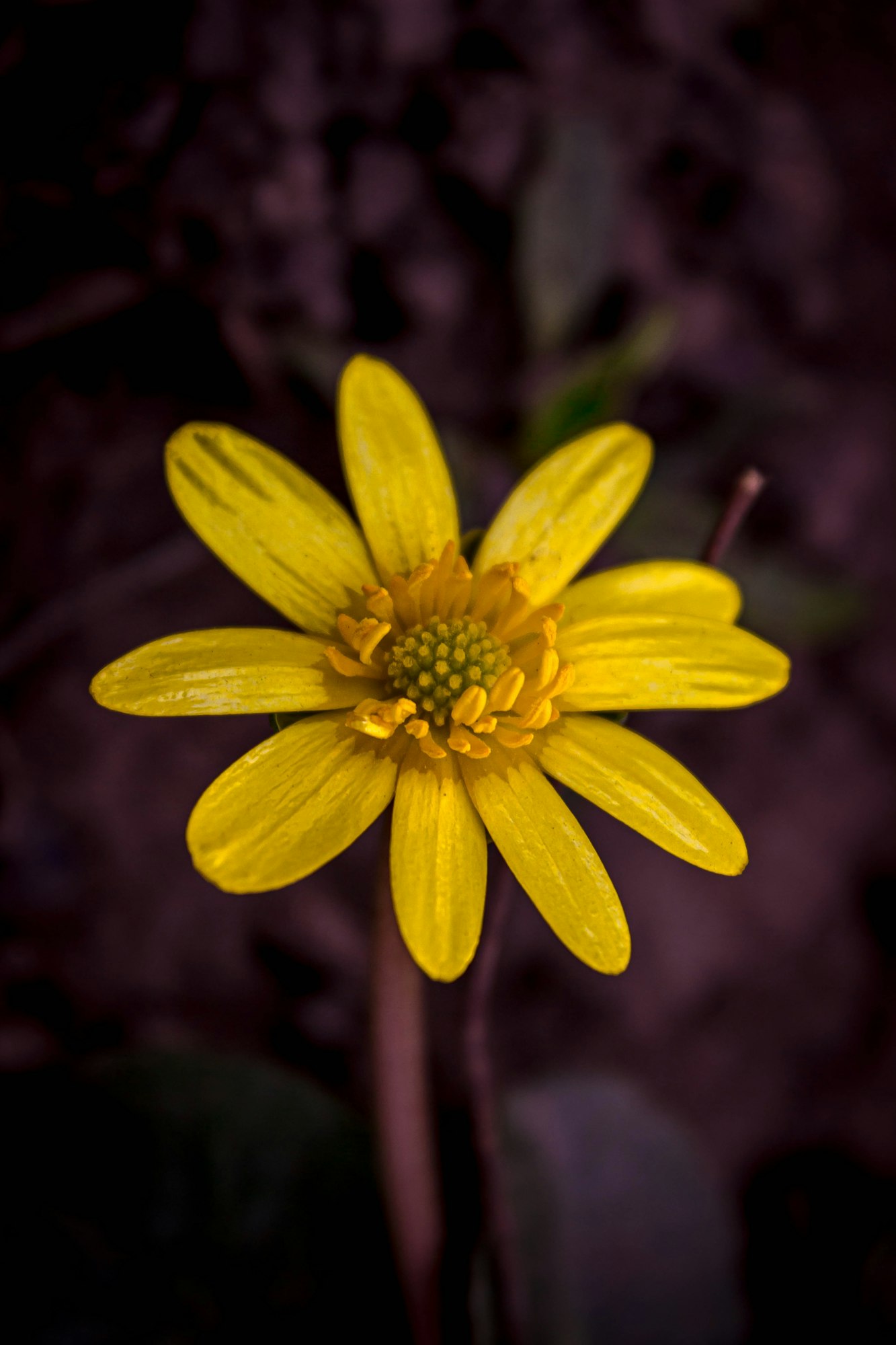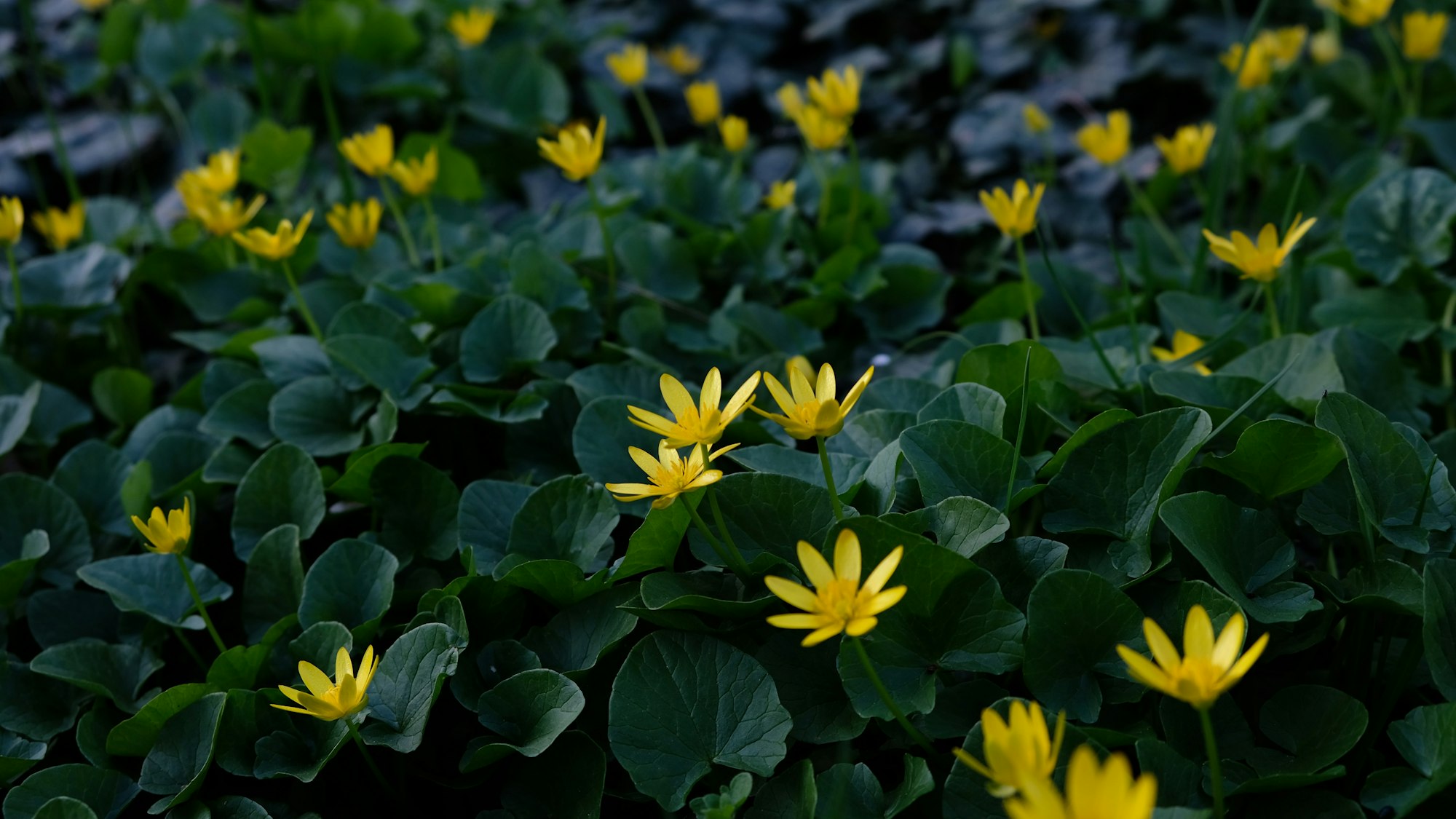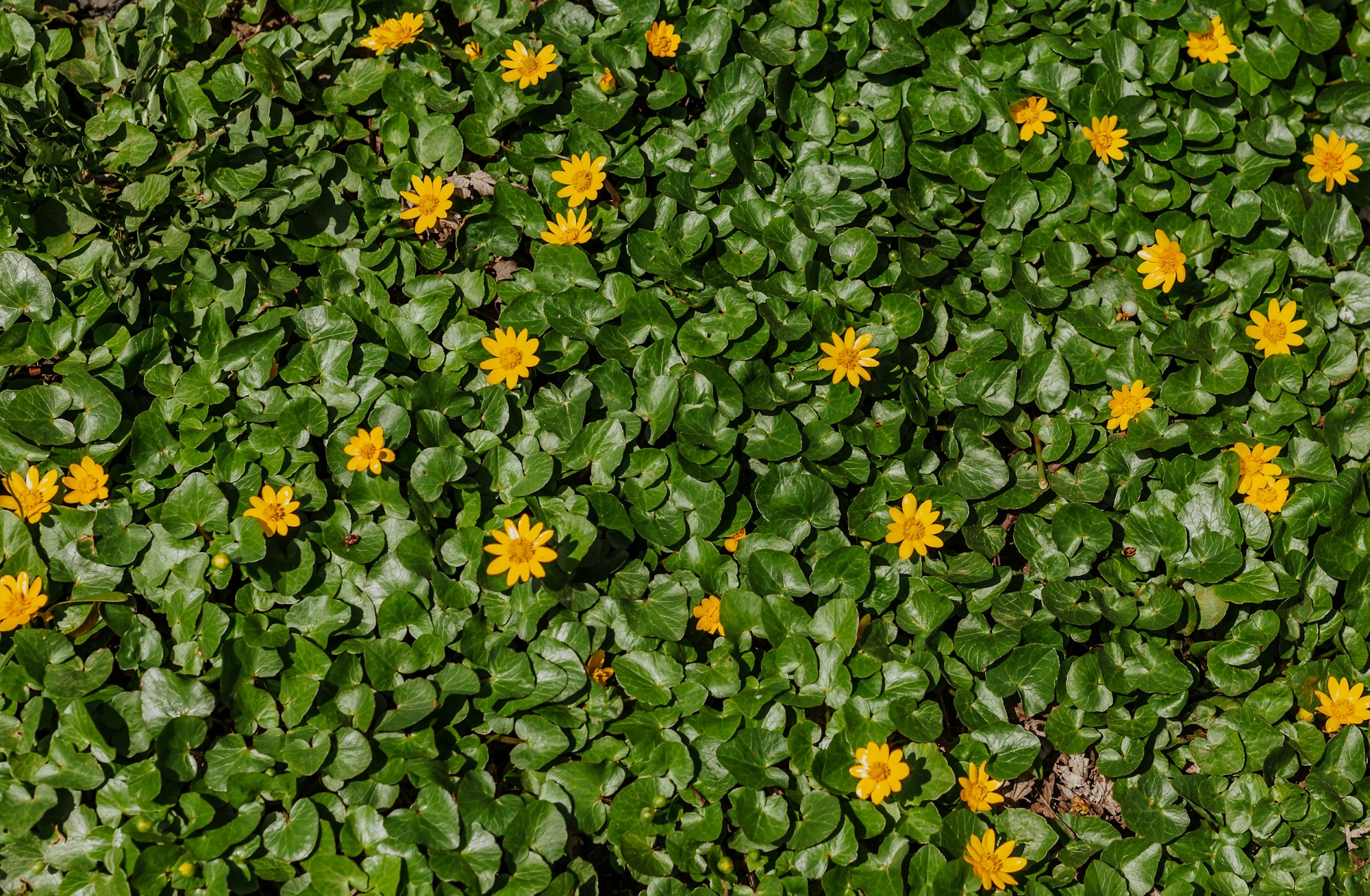LESSER CELANDINE
(Ranunculus ficaria)
Other common names: Fig buttercup, figroot buttercup, figwort, bulbous buttercup, small crowfoot, pilewort
Weed Class/Rating: “B” Rated weed by ODA. “A weed of economic importance which is regionally abundant, but may have limited distribution in some counties”
Family: Buttercup
Lifecycle: Perennial (life cycle lasts more than one year)
Average Height: 4-10 inches tall
Leaves: Grows as a rosette, meaning the leaves originate from a point on the stem close to the ground. Leaves are dark green and can be heart or kidney-shaped. Leaves begin to emerge from January to February.
Flowers: Bright, buttercup-like flowers appear from March to May before most native plants. Flowers are symmetrical and typically have 8 petals.
When in bloom, large infestations appear as green carpets with yellow dots, spreading across the forest floor.
Dispersion: The primary reproductive method is the formation of turions that are produced on the roots in large numbers. They are easily moved in contaminated dirt or by water
Impacts: Dense colonies of lesser celandine displace many native plant species, especially those with similar early spring-flowering cycles. The loss of early spring wildflowers leads to the loss of early pollinator food sources. Lesser celandine escaping from private plantings quickly overwhelms flowerbeds and lawns.
Other notes: Contaminated garden loam applied to new lawns can create problems in a few short years. Because of the bulbous nature of the root system, control can be difficult. Bulb fragments are easily overlooked during manual control, leading to re-infestation.
Toxicity: Toxic once mature and can cause skin irritation when touched.
Lesser Celandine was originally planted as an ornamental species. It escaped cultivation and now has spread throughout the Northeast, Midwest, and into the Pacific Northwest states. It is an attractive, easy-to-cultivate plant that can quickly spread throughout a landscape. Reproducing from seeds and tubers, the species is especially difficult to control.
It prefers shaded to partially shaded sites though it can thrive in full sun with adequate soil moisture. Deciduous woods are an excellent habitat for this species enabling the plant to grow and bloom well before leaf initiation in the forest canopy














IF SEEN:
Treating lesser celandine can be difficult because it can spread rapidly.
- Manual Control: Manual removal is only recommended for small patches. When removing, make sure to remove all fragments of its roots and tuberous roots to prevent further infestation. As much as possible, keep soil disturbance to a minimum. All plant parts and nearby soil should be placed in a bag and thrown away in the trash— not your yard waste bin or home compost.
- Chemical Control: The window of opportunity for controlling lesser celandine is very short, due to its life cycle. In order to have the greatest negative impact on celandine and the least impact on desirable native wildflower species, herbicide should be applied in late winter-early spring (March through May). Please consult the local OSU Extension Office or Oregon Department of Agriculture before beginning any chemical treatment
Please contact us for free technical assistance if you have garlic mustard growing on your property. You can also make an observation/track plants through iNaturalist.
